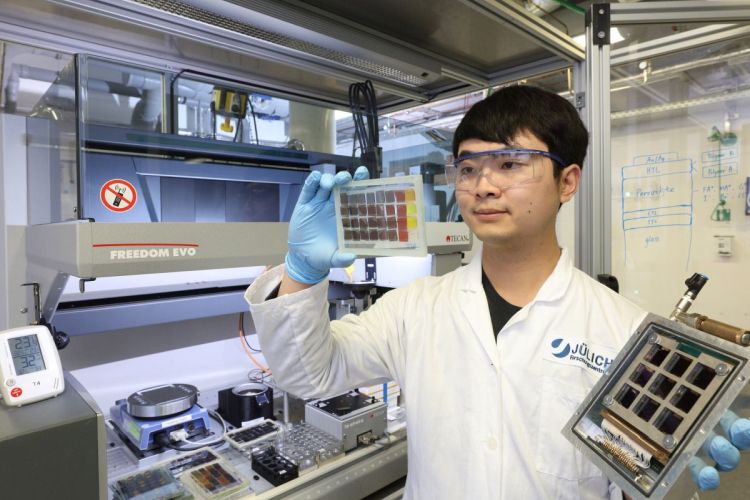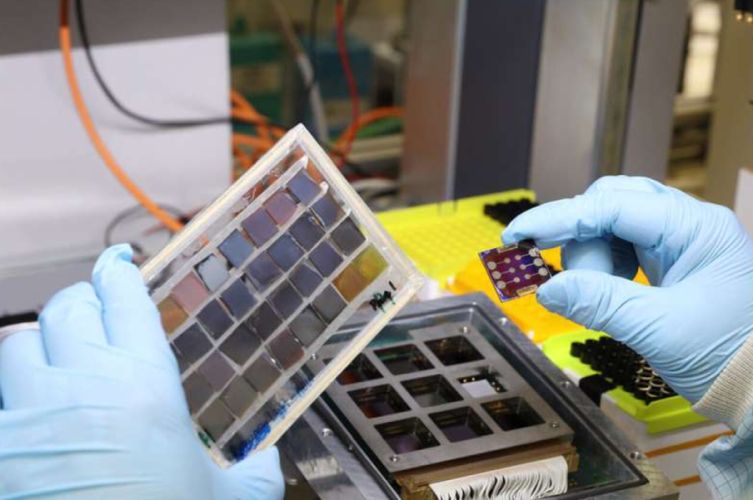
Perovskite is an emerging name in the new generation of solar modules. Due to its super power conversion efficiency, it is extensively studied by researchers in photovoltaic technologies.
The material with a specific crystal structure has short service life, which was one of its biggest hurdles to its practical use, however, things are not the same with perovskite any more. Researchers at the Helmholtz Institute Erlangen-Nuremberg of the Forschungszentrum Jülich have come up with its new variant that stands out for its special stability. At high temperatures and illumination over 1450 hours of operation, the perovskite powered cell continued to hold 99 percent of its initial efficiency.
The stand out feature of perovskite is its crystalline arrangement. Due to its lattice structure, many material combinations of different atoms and molecules are possible. And a few of those display ferroelectric, superconducting or photovoltaic properties.
Perovskite is not new but the class of materials was only recently discovered for photovoltaics. And within a decade of research, it has proved its worth by increasing the efficacy for conventional silicon solar cells to the next level.
With respect to silicon crystals, perovskites have added advantages, some of them were:
- they can be easily created
- it produces good results without costing a lot of money and
- conserves energy
Silicon-based technology has nearly reached its limit. However, the layers of perovskite cells – few hundred nanometres thick – gives an upper edge to the already mature solar tech.
Durability v/s perovskite solar cells
Robustness is one of the major features when it comes to traditional silicon modules, an area where perovskite solar cells totally lack ground. This accounts for the low efficiency for perovskite based solar cells, confirmed Prof. Christoph Brabec of the Helmholtz Institute. Two decades of solar cells yields to not much of performance issue than solar cells made of perovskite that lose efficiency after just a few days or weeks.
Explaining his breakthrough, Prof. Brabec added that keeping the durability issue in mind, they have fabricated new form of perovskite solar cell that exhibit an extraordinary stability.
The cell survived 1450 hours at elevated temperatures around 65 degrees Celsius in the lab. Although long term estimate is not easy to predict, the team however feel certain that the new perovskite based solar cell can operate for more than 20,000 hours under normal circumstances.

High-throughput methods to optimization
The result is no accident, rather it involved thorough iterations of hundreds of different perovskite mixtures, keeping suitability and stability in mind.
To identify the best material combinations the researchers not only relied on proven components but they also come up with numbers of possible compositions.
Researchers took another step towards optimisation, that is to stabilise the contacts of perovskite within the cell, by building up several thin layers.
Ionic dopants or metal oxide nanoparticles are used as contact points (within cell). During elevated temperature, the nanoparticles undergo secondary reactions. Thus, causing etching and corrosion of the metal electrodes. This weakens the contact and electrical conductivity right at the initial stage.
To solve this problem, researchers covered the entire electrode with protective layer. The double-layer polymer structure not only maintained the decontaminated contact points but it also defended against degradation. In addition, the architecture displayed stable conductivity, even at elevated temperatures.
Currently, the effectiveness amounts to about 20.9 percent, while researchers envision to work towards 24 to 25 percent efficiency.
Takeaway
Double-layer polymer electrode structure makes the highly unstable perovskite cells into super power solar cells. Slight modification improved the device by increasing the stability. I’m sure this is not just one of its innovative sides. With more research, perovskite solar technology will speed up commercialization of mature solar tech.



